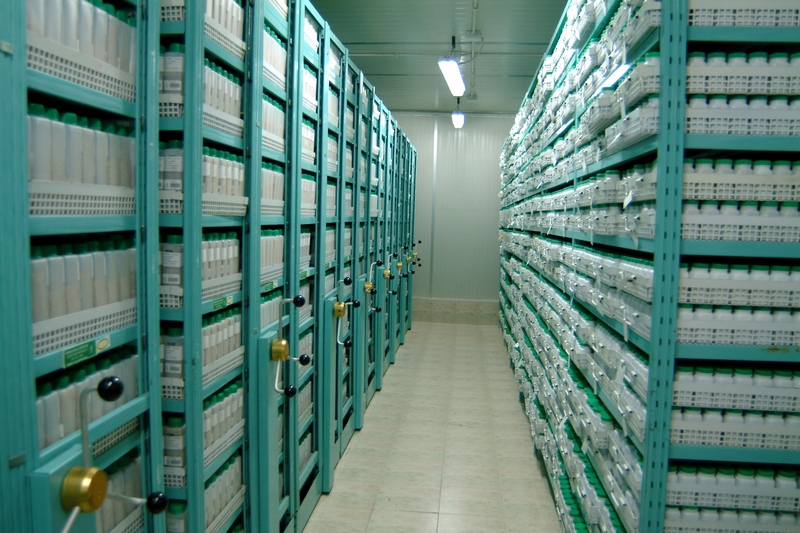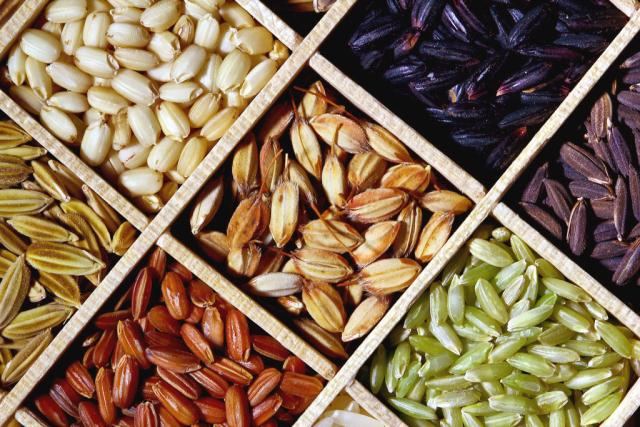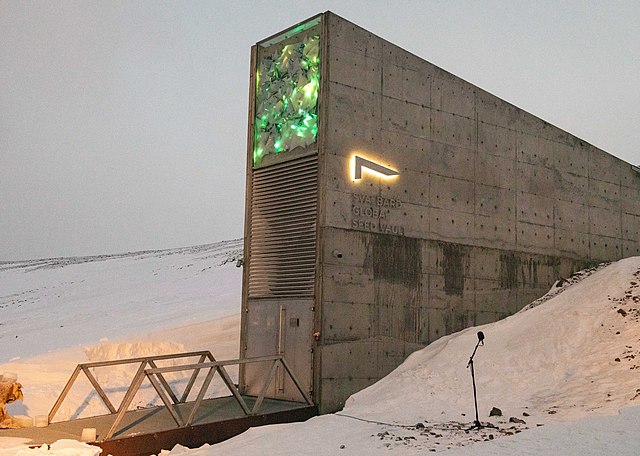 Did you know that researchers traverse the world to collect seeds to add to seed vaults worldwide?
Did you know that researchers traverse the world to collect seeds to add to seed vaults worldwide?
In 2022, ICARDA (the International Center for Agricultural Research in the Dry Areas) started two new seed banks in Morocco and rural Lebanon.
A seed bank is usually in a centralized location where seeds are preserved to maintain plant diversity for the future - for as long as possible. The vaults are radiation proof and the seeds are stored in darkness, at low temperatures (-20 °C) and dry conditions.
There are nearly 1,500 seed banks in the world today. One of the most prominent is the Svalbard Global Seed Vault in Spitsbergen, Norway - surrounded by a thick layer of permafrost. Currently, nearly 2.4 billion seeds are stored in seed banks worldwide, with more than 10,000 tree and shrub species.
Why is there so much interest in preserving and storing seeds?
Why Seed Banks?
 Globally, nearly 40% of plant species are under the threat of extinction due to habitat loss, climate change, and plant disease. Seed banks enable us to collect and store seeds from these endangered species to maintain the biodiversity of our world.
Globally, nearly 40% of plant species are under the threat of extinction due to habitat loss, climate change, and plant disease. Seed banks enable us to collect and store seeds from these endangered species to maintain the biodiversity of our world.
However, these vast reserves also face threats, especially in regions with conflicts and natural disasters. For example, ICARDA originally stored its seed collections in Aleppo, Syria. But after the Syrian Civil War broke out, in 2011, rebels took over parts of the country, placing the seed bank at risk. In an effort to save the seeds in the Syrian bank, ICARDA opened backup seed banks in Morocco and Lebanon.
Fighting Climate Change
Let’s consider legumes. Legumes, which include lentils, beans, and peas, belong to the Fabaceae plant family. These plants have piqued the interest of scientists due to their ability to capture carbon dioxide from the atmosphere.
Furthermore, different varieties of legumes release nitrogen into the soil, lowering the need for chemical fertilizer. Additionally, legumes require very little water for growth, making the plant a triple-edged sword in the fight against climate change. The gene bank at Lebanon stores around 120,000 varieties of legumes, barley, wheat, and other seeds native to Africa and Middle East Asia.
Pests, Obesity, Failed Harvests
 Seed banks have even broader benefits. During the Syrian war, ICARDA scientists moved Iranian wheat seeds for protection. American scientists used this seed to breed new wheat seeds resistant to the Hessian fly, which causes millions of dollars of damage to crops every year.
Seed banks have even broader benefits. During the Syrian war, ICARDA scientists moved Iranian wheat seeds for protection. American scientists used this seed to breed new wheat seeds resistant to the Hessian fly, which causes millions of dollars of damage to crops every year.
Dr. Thavarajah, of Clemson University, developed a legume to fight obesity by producing legumes that regulate weight. She also developed legume seeds that can grow in South Carolina during the winter. This can prove to be essential as climate change is making planting seasons more prone to change. This way, losses in crop yield during the harvest time can be accounted for in the winter.
Seed banks offer us great reserves for a secure and sustainable future. There are still thousands of seeds in gene banks waiting to be fully tested and cataloged. There awaits a whole treasure trove of discoveries and innovations to aid climate change!
Sources: NPR, ICARDA, India Times, Harvard, USDA







